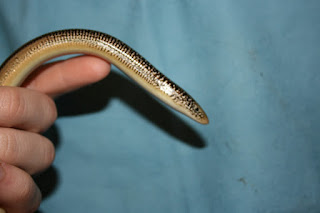Do you ever wonder how scientists learn about evolution?
Follow us this week as Dan, Tim, Andrew and I will head down to the Guana Tolomato Matanzas National Estuarine Research Reserve and Tomoka State Park in Florida to continue an exciting experiment we began last year. We are really glad to have you follow along as we do science and we are looking forward to answering your questions on line. Let me tell you a bit about what we will be doing down there on our islands. You can also follow on twitter @mr_reedy (#lizardproject) or on youngzine.com
What questions are you trying to answer with your experiment?

All science starts with a question and the big question we are asking, “Why is there a 50/50 sex ratio in so many animal populations?” If you really think about it, this doesn’t necessarily make the most sense for an animal population. Since a population can often grow faster with many females and few males, why is it that we so often find males and females in almost equal numbers?
When thinking about this we also wondered, “If the sex ratio, became really biased towards one sex or the other, how quickly would natural selection push things back to 50/50?
And,” In a world that is mostly female, would males have a better chance of surviving and reproducing? What about in a world that is mostly male?
What are your hypotheses?
The leading theory on the 50/50 sex ratio is that when the ratio gets out of balance, natural selection pushes it back towards 50/50. For example when there are many male lizards all fighting for territory in the trees, you have a better chance of surviving if you are a female. Therefore in a world with more males, a balance will quickly be restored as many males die before reproducing and many females survive to adulthood. This is our general hypothesis.
We also think that in situations with biased sex ratios, natural selection will favor traits differently. We think that on an island with many males and few females, the biggest males will be more likely to survive. However, we think that on an island with few males and many females, the smallest males will have a better chance of survival and reproduction, because it will be easy for nearly all males to find a territory and mate. In this case, the large body size may be a waste of energy and be more noticeable to predators.
How are you testing these ideas?
With an experiment of course! Many people wrongly think that questions about evolution can’t be tested in the wild because evolution is a slow process. However, evolution can be seen in the wild and measured if we look carefully.
Since our question is big, so is our lab. Instead of testing animals in laboratory cages, we use entire islands as our animal enclosures for the experiments!
To test our hypotheses, we set up 9 experimental islands that did not have brown anole lizards living on them. On five of the islands we released a 66% male population and on the other four islands we released a 66% female population. Before we introduced these populations to the islands, we took DNA samples and careful measurements from each of our founder lizards. Now we will be able to check each year to see which individual lizards were most and least successful at producing baby lizards. We will also continue to measure the future generations to see how natural selection is working to shape the evolution of these populations on the different islands. We may be able to see evolution in action…but first we have to catch, measure, and take DNA samples from nearly every lizard on our nine islands. We are going to be busy!








